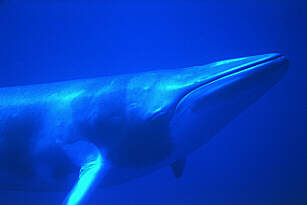Self-Contained Underwater Breathing Apparatus, or SCUBA for short, i s a hell of a lot of fun. There is
considerably more to Diving than just piling into a wetsuit and strapping some compressed
air onto your back; to dive safely requires quite a bit more in terms of time and
effort. When one goes underwater, the weight of the water above you greatly compounds the
amount of pressure you (and your ears, and lungs, and the air in your lungs) are under.
While it takes the entire height of the atmosphere to contain a weight of air enough to
give 1 atmosphere (1 ATM) of pressure (the pressure you are used to be under as you walk
around everyday), it only takes 33 ft. of water to make up an additional ATM of pressure;
of course, the air is still there too, so at a depth of 33 feet, a diver is subjected to
two Atmospheres of pressure, fully twice what you are subjected to at the surface!
s a hell of a lot of fun. There is
considerably more to Diving than just piling into a wetsuit and strapping some compressed
air onto your back; to dive safely requires quite a bit more in terms of time and
effort. When one goes underwater, the weight of the water above you greatly compounds the
amount of pressure you (and your ears, and lungs, and the air in your lungs) are under.
While it takes the entire height of the atmosphere to contain a weight of air enough to
give 1 atmosphere (1 ATM) of pressure (the pressure you are used to be under as you walk
around everyday), it only takes 33 ft. of water to make up an additional ATM of pressure;
of course, the air is still there too, so at a depth of 33 feet, a diver is subjected to
two Atmospheres of pressure, fully twice what you are subjected to at the surface!

Of course, a diver would have to go really, really deep before being in any danger of actually being crushed by the pressure, but its what the pressure does to the gases in your body that can be dangerous. Elementary recollection of physics recalls Boyle's Law of gases, which suggests that the volume of a gas is proportional to its pressure. Thus, were you go to a depth of, say, 33 feet (1 extra ATM) and fill your lungs with a breath of air from your tanks and then ascend to the surface without exhaling, the air in your lungs would expand to twice its volume, causing massive trauma to your lungs. Other more subtle problems occur with gas under pressure, such as the accumulation of residual nitrogen in the body's tissues which can result in Decompression Sickness (DCS), commonly known as the bends. Fortunately, most of the perils of diving can be avoided by being in good physical condition, and by being properly trained. N.A.U.I., the National Association of Underwater Instructors is one of the large providers of dive certifications, and, in my oppinion, the best.
 In addition to proper certifications, additional dive safety information and
training can be gained on an ongoing basis through D.A.N.,
the Divers Alert Network, who provide a quarterly magazine on dive safety issues, various
safety training and safety services around the world, and low cost dive
insurance.
In addition to proper certifications, additional dive safety information and
training can be gained on an ongoing basis through D.A.N.,
the Divers Alert Network, who provide a quarterly magazine on dive safety issues, various
safety training and safety services around the world, and low cost dive
insurance.

When a diver is fully trained, and in good mental and physical condition, safe diving can be one of the most enjoyable of experiences. The true beauty of the underwater world, coupled with the marvellous almost-weightlessness of floating with neutral buoyancy is an indescribable experience. Diving is enjoyed and supported around the world. The Three Routes World Wide SCUBA Directory provides an amazing index of dive shops and dive support services, sorted geographically, which allows you to gain information about diving around the world.
[Courses][Tips of the day][Links] [GUESTBOOK]
![]()